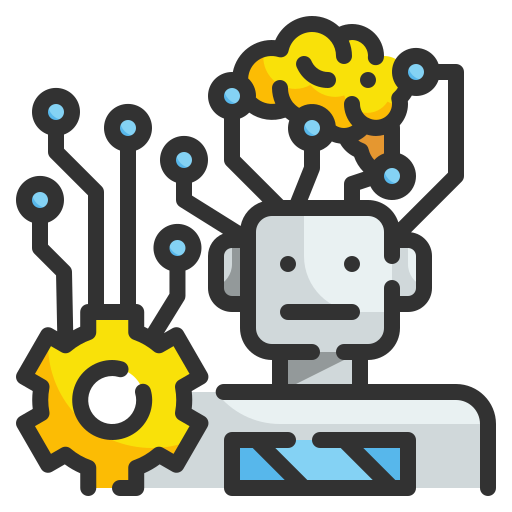In today’s fast-paced business environment, organizations must be agile and adaptable to stay competitive. A key strategy to achieve this flexibility is resource augmentation, a process that allows companies to expand their teams with skilled professionals without the long-term commitments of traditional hiring. Whether you’re looking to fill skill gaps, scale operations quickly, or access specialized expertise, resource augmentation offers the perfect solution.
This blog explores the concept of resource augmentation, its benefits, use cases, and how it can help your business thrive in a competitive market.
What Is Resource Augmentation?
Resource augmentation is a staffing strategy where businesses hire external professionals or teams on a temporary or project-specific basis. These professionals seamlessly integrate with your in-house teams, enabling you to scale your workforce based on project demands.
This model is particularly popular in industries like IT, engineering, healthcare, and creative services, where specialized skills are often required for short-term projects or seasonal workloads.
Benefits of Resource Augmentation
1. Cost-Effectiveness
Traditional hiring involves expenses such as recruitment fees, training, benefits, and long-term salaries. With resource augmentation, you only pay for the resources you need, when you need them, significantly reducing overhead costs.
2. Flexibility and Scalability
Resource augmentation allows businesses to scale their workforce up or down based on project demands. This flexibility is ideal for businesses handling fluctuating workloads or seasonal spikes.
3. Access to Specialized Skills
Sometimes, projects require niche expertise that may not be available in-house. Resource augmentation gives you access to a global talent pool of specialists, ensuring your projects are handled by experts.
4. Faster Onboarding
Augmented resources are usually pre-vetted professionals who can hit the ground running. This minimizes onboarding time and ensures your project progresses without delays.
5. Risk Mitigation
Hiring full-time employees comes with risks, such as mismatched skills or performance issues. With resource augmentation, you can evaluate professionals based on their performance and fit before considering long-term commitments.
How Does Resource Augmentation Work?
The resource augmentation process typically involves the following steps:
- Needs Assessment: Identify the skills and expertise required for your project or business needs.
- Partner Selection: Choose a reliable resource augmentation provider with a proven track record.
- Resource Allocation: The provider matches your requirements with pre-vetted professionals.
- Integration: Augmented resources integrate with your in-house teams, working collaboratively to achieve your goals.
- Performance Monitoring: Regular assessments ensure the augmented resources meet project expectations.
Use Cases of Resource Augmentation
1. IT and Software Development
In the tech industry, resource augmentation is widely used for tasks such as software development, app development, cybersecurity, and system integration.
- Example: A startup needs a mobile app developer for a six-month project but lacks the in-house expertise. Through resource augmentation, they hire an experienced developer who completes the project efficiently.
2. Healthcare
Healthcare providers often face staffing shortages, especially during peak periods or emergencies. Resource augmentation helps bridge these gaps with qualified medical professionals.
- Example: A hospital hires temporary nurses and technicians during flu season to manage increased patient inflow.
3. Engineering and Construction
Large-scale construction projects often require specialized engineers, architects, and project managers. Resource augmentation provides access to this talent pool.
- Example: An engineering firm augments its team with structural engineers to meet a tight project deadline.
4. Creative and Marketing Services
Marketing campaigns often require graphic designers, copywriters, and digital marketing experts. Resource augmentation ensures these needs are met without overburdening your internal team.
- Example: A retail brand hires a social media strategist to launch a holiday campaign.
5. Manufacturing and Supply Chain
In manufacturing, resource augmentation is used to address workforce shortages during peak production cycles.
- Example: A manufacturing company augments its team with machine operators and quality inspectors to fulfill a large order.
Choosing the Right Resource Augmentation Partner
Selecting the right resource augmentation partner is critical to achieving your business goals. Here are some factors to consider:
1. Industry Expertise
Choose a provider with experience in your industry to ensure they understand your specific needs and challenges.
2. Talent Pool Quality
Ensure the provider has access to a diverse talent pool of skilled professionals who meet your requirements.
3. Flexibility and Customization
The provider should offer flexible engagement models and tailor their services to your unique needs.
4. Support and Communication
Effective communication and ongoing support are crucial for seamless integration and project success.
5. Reputation and Reviews
Research the provider’s reputation and read client reviews to gauge their reliability and performance.
Challenges in Resource Augmentation and How to Overcome Them
1. Integration Issues
Augmented resources may face challenges in integrating with your in-house team.
- Solution: Foster open communication, provide clear project guidelines, and encourage collaboration.
2. Cultural Differences
Working with professionals from different regions can lead to cultural misunderstandings.
- Solution: Promote cultural awareness and inclusivity within your team.
3. Data Security Risks
Sharing sensitive information with external resources may pose security risks.
- Solution: Implement robust data security measures and sign non-disclosure agreements (NDAs).
4. Dependency on External Resources
Over-reliance on augmented resources may hinder your ability to build in-house expertise.
- Solution: Use resource augmentation strategically and invest in training your internal team.
Real-World Success Stories
Case Study: IT Company Achieves Rapid Scalability
An IT company needed to develop a new software product within a tight deadline but lacked sufficient in-house developers. By partnering with a resource augmentation provider, they hired a team of experienced developers who delivered the project on time and within budget. The company achieved a 30% reduction in development costs and successfully launched the product.
Case Study: Marketing Agency Expands Services
A marketing agency wanted to offer video production services but lacked the necessary skills. Through resource augmentation, they hired a video editor and motion graphics expert, enabling them to expand their service offerings and attract new clients.
The Future of Resource Augmentation
As businesses embrace remote work and globalization, resource augmentation will continue to grow in popularity. Emerging technologies like artificial intelligence and automation are also expected to enhance the efficiency and effectiveness of this model.
Additionally, resource augmentation providers are increasingly offering value-added services, such as training and upskilling, to help businesses stay ahead of industry trends.
Conclusion
Scaling your workforce doesn’t have to be a daunting task. Professional resource augmentation services provide a cost-effective, flexible, and efficient way to meet your business needs, access specialized skills, and achieve your goals.
Whether you’re managing a short-term project, addressing seasonal demand, or filling skill gaps, resource augmentation empowers you to stay agile and competitive in an ever-changing market. By partnering with the right provider and leveraging the expertise of augmented resources, your business can thrive and reach new heights.
Ready to scale your workforce? Explore resource augmentation services today and transform the way you do business!









